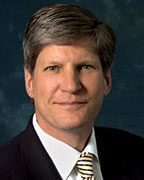
Report Card
Key Performance Indicators at ASTM International
Our members come to ASTM International to achieve their goals and develop standards. The job of the ASTM board of directors and staff is to optimize the process in such a way that the goals and expectations of our members are met. The ASTM staff is a team of professionals that works constantly to facilitate and streamline the standardization process, remove obstacles to participation and relieve our volunteers' administrative burdens. Those of us who provide this support are keenly aware of the technical expertise, dedication and hard work our members bring to the development of ASTM standards, and we see our involvement as more than a job. It's a mission.
But even missions have to be tested against the end game. At the prompting of the ASTM International board of directors, ASTM staff evaluated progress in each of its strategic objectives and conducted a survey to assess member satisfaction. We used key performance indicators to measure our progress and evaluate our performance against defined goals. Here's the report card:
- Cycle time (from initial draft balloting to publication) has been greatly reduced. In 2000, it took approximately 22 months to develop a new standard. In 2010, cycle time was 14 to 17 months. Cycle time for revisions saw a similar reduction from 12 months in 2000 to eight months in 2010.
- The use of technology tools has increased, enabling members to maintain momentum between committee meetings. In 2009, members held 944 virtual meetings to accelerate standards development; in 2011, there were 1,137 such meetings. Also in 2009, there were 701 online collaboration areas; in 2011, there were 1,715.
- The total number of standards has increased. In 2009, the number was 12,160. In 2011, it was 12,296.
- The broad-based utilization of ASTM standards continues to grow. The number of ASTM standards adopted, referenced or used as the basis of national standards has increased from 5,838 in 2009 to 7,024 in 2011.
- Sales outside the United States rose from 41 percent of total sales in 2009 to 46 percent in 2011.
- Member participation in ASTM technical committees continues in annual incremental increases of 3 percent per year.
- Attendance at committee weeks has increased from 8,559 participants in 2009 to 10,108 in 2011.
The number of new standards as a percentage of total work items has remained fairly constant at about 8 percent over the past few years. However, it is interesting to see a marked increase in the number of standards that contain rationalized SI1 units of measurement over the past three years, another indication of the growing global application of the ASTM portfolio.
There has also been a dramatic increase in our social media activity. "Likes" on the ASTM International Facebook page jumped from 900 in 2010 to over 3,000 in 2011. "Followers" of ASTM's Twitter page grew from 400 to 1,500 in the same time period, and there were 972 ASTM LinkedIn group members in 2011, our first year on that platform.
Overall, the picture was one of progress and productivity, a significant achievement, especially in the face of the economic downturns of the time period we surveyed. ASTM International not only did not decline in its overall performance, but actually experienced growth.
Recently, ASTM staff conducted a survey to gauge member satisfaction. More than 3,000 members responded, and I'd like to take the opportunity here to say thank you to the members who participated.
The results showed that among the members surveyed, an overwhelming majority were satisfied or highly satisfied with the following:
- The annual membership fee;
- Membership benefits (free volume, publication discount, etc.);
- The technical quality of ASTM standards;
- The meeting experience;
- Website tools;
- The overall importance of ASTM standards to their industry;
- The use of ASTM standards in their industry; and
- Their overall ASTM experience.
Additional suggestions have the staff exploring options relating to the member benefit volume of the Annual Book of ASTM Standards, more technology tools at ASTM meetings, other functions within the collaboration spaces and a redesign of the ASTM website to make it easier to use. In some cases, the staff has interacted with commenters to discuss issues in more depth.
These surveys showed us not only where we are at present, but where we want to go in the future. The board of directors of ASTM International and its staff are well aware that we are the custodians of a standards organization that is, in every way, exceptional. We are dedicated, therefore, to its prosperity, its continuance and its vitality. Our mission is to support the work of our members, to make sure that they have what they need to continue their tremendous contributions to health and safety. Our job is to constantly look for ways to stay relevant, to stay ahead of the curve, to accelerate the process, to increase efficiency and to do whatever it takes to enhance the standardization experience. And that we will continue to do.
Reference
1. International System of Units.
James A. Thomas
President, ASTM International
 SN Home
SN Home Archive
Archive Advertisers
Advertisers Masthead
Masthead RateCard
RateCard Subscribe
Subscribe Email Editor
Email Editor